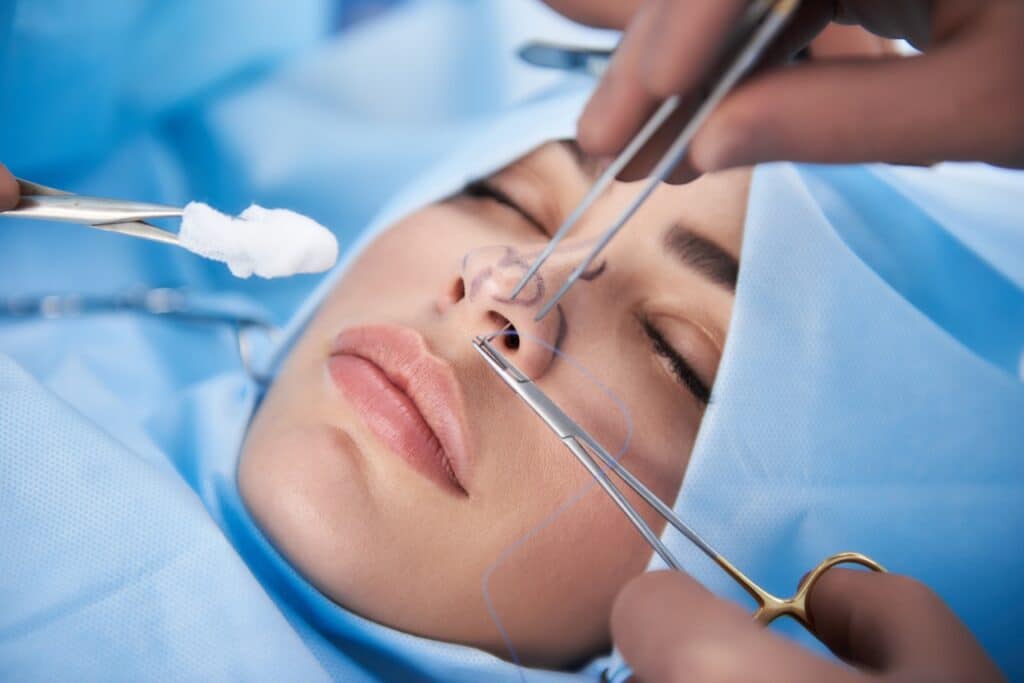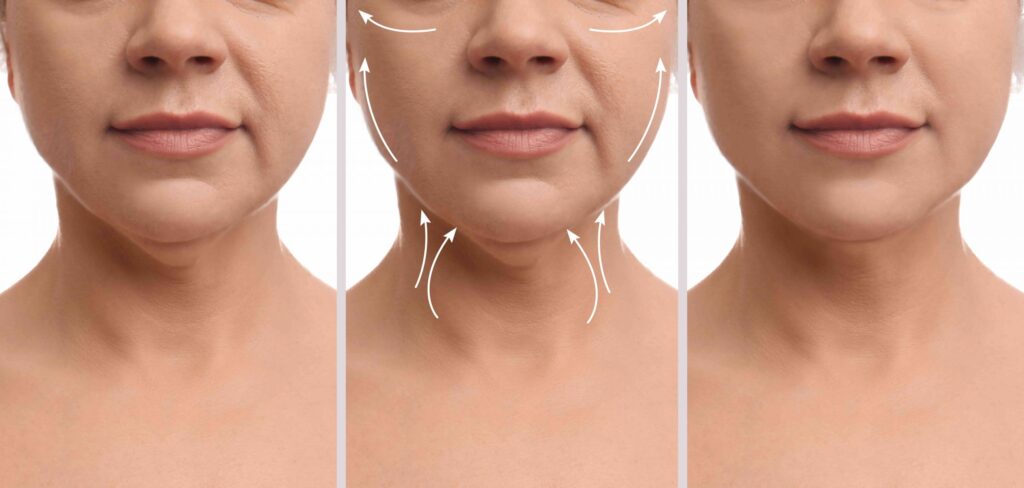Navigating the aftermath of rhinoplasty requires patience and knowledge. A successful recovery is a critical step towards achieving your desired outcome. This post aims to demystify the healing process, offering essential insights into what patients can expect during this delicate phase. We’ll cover practical tips for managing discomfort, timelines for returning to daily activities, and strategies for ensuring optimal results—all crucial elements of post-operative care that pave the way to a smooth transition back to normalcy after rhinoplasty.
Detailed Rhinoplasty Recovery Timeline
Initial Hours
After a rhinoplasty, the first 48 hours are crucial. Patients need careful monitoring during this period. Swelling and bruising around the nose are common. Pain is often managed with medication prescribed by the surgeon.
Rest is key in these initial hours. It helps reduce swelling and speeds up healing. Keeping the head elevated can also aid recovery.
First Weeks
By the end of two weeks, patients typically see a significant reduction in bruising. They may notice changes as their nasal passages begin to heal from the rhinoplasty surgery.
During this time, it’s important to avoid strenuous activities that could impact recovery or cause injury to your nose.
One Month
Reaching the one-month milestone marks an important phase in rhinoplasty recovery. The major swelling usually subsides by now, revealing more of the final shape of your new nose.
Follow-up visits with your surgeon ensure everything is healing properly and according to plan.
Managing Swelling and Pain During Recovery
Cold Compresses
Cold compresses are a vital tool for managing swelling. Apply them carefully around the surgical area. This helps reduce inflammation.
Do not apply ice directly to your skin. Use a cloth barrier instead. Follow your surgeon’s guidance on timing and frequency.
Medication Adherence
Strictly follow prescription pain medication instructions. It is crucial for controlling discomfort during the healing process.
Overuse can lead to complications, while underuse may cause unnecessary pain. Always consult with your healthcare provider if issues arise.
Sleep Positioning
Proper sleep positioning aids recovery significantly. Keep your head elevated above your heart level when resting or sleeping.
This position helps minimize swelling overnight, which is often when fluids accumulate due to inactivity.
Postoperative Care and Incision Management
Incision Upkeep
After a rhinoplasty, keeping the incisions dry and clean is crucial. This step prevents infection, which can complicate recovery. Patients should gently cleanse the area as instructed by their surgeon.
Avoid getting the site wet during activities like showering. Use a damp cloth to clean around it instead of direct water flow.
Expression Limitation
Facial movements play a role in healing after rhinoplasty. It’s best to avoid strenuous facial expressions such as smiling wide or frowning deeply. These actions can strain the delicate incisions.
Simple measures include speaking less animatedly and using ice packs to reduce swelling that might tempt one to scrunch their face from discomfort.
Suture Timing
The removal of sutures is typically scheduled for about one week post-surgery. This timing allows tissues enough time to start healing properly without leaving sutures in too long, which could leave more noticeable scars.
Patients must follow their surgeon’s advice on when exactly to have them removed for excellent care outcomes.
Keeping these aspects in mind ensures better healing and reduces potential complications following your surgical procedure.
Dietary Recommendations and Medication Guidelines
Soft Foods
After rhinoplasty, the body needs gentle care. Eat soft foods in the initial days. These include:
- Yogurt
- Applesauce
- Broth-based soups
Chewing can be tough post-surgery. Soft foods help avoid stress on the surgical site.
Stay clear of hard or chewy items. They may cause discomfort or harm your recovery process.
Hydration Importance
Hydration is key for healing after rhinoplasty. Drink plenty of water to aid recovery.
Avoid alcohol and caffeine as they can dehydrate you. Instead, focus on water and electrolyte-rich drinks like coconut water or sports beverages.
Proper hydration helps reduce swelling and speeds up healing time.
Medication Caution
Be cautious with medications post-rhinoplasty. Avoid blood-thinning drugs such as aspirin or ibuprofen, which could increase bleeding risks.

Also steer clear from supplements that might thin the blood, like vitamin E or fish oil, unless approved by your doctor.
Your surgeon will likely prescribe safe pain relievers to manage discomfort without risking your recovery process.
Activities and Limitations After Surgery
Exercise Caution
After rhinoplasty, your body needs time to heal. For the first six weeks, avoid any heavy lifting or vigorous exercise. This helps prevent bleeding, swelling, and other complications.
- Take short walks to promote blood circulation.
- Gradually increase activity level as recommended by your surgeon.
Remember that rest is crucial for a smooth recovery process.
Importance of Post-Op Appointments
Regular Check-Ups
After rhinoplasty, attending regular check-ups is vital. These appointments allow doctors to monitor your healing. They can spot issues before they worsen. It’s important to stick to the schedule your surgeon provides.
During these visits, expect a physical exam of your nose. The doctor will look for signs that you’re healing well. They’ll also ask about any discomfort or unusual symptoms you might have.
Early Intervention
If there are complications, early detection is key. Surgeon visits play a big role in this process. For instance, if an infection starts, catching it quickly means faster and easier treatment.
Follow-up appointments often happen within the first month post-op. This period is critical for recovery outcomes.
Optimal Results
To achieve the best results from rhinoplasty, follow-up appointments are crucial.
- They ensure everything heals as planned.
- Surgeons can give personalized advice during each visit.
These sessions help both patient and surgeon stay on track for optimal recovery.
Tips for a Speedy Recovery
Follow Instructions
Following your surgeon’s advice is crucial. They know the recovery process best. Stick to their guidelines strictly.
After surgery, it’s tempting to bend rules for comfort. But remember, neglect can delay healing or cause complications. Your doctor provides instructions for a reason: they ensure safe and efficient recovery.
Rest Well
Adequate rest is essential during the recovery period. Sleep promotes healing and helps ease discomfort.
However, lying in bed all day isn’t ideal either. Light walking boosts circulation which aids recovery speedily. It also prevents blood clots that could complicate your situation.
Avoid Harmful Substances
Steer clear of smoking and alcohol after rhinoplasty treatment. These substances hinder the body’s ability to heal well.
Smoking reduces oxygen in the blood, slowing down tissue repair significantly. Alcohol can increase swelling and bleeding risks which prolongs recovery greatly.
By adhering closely to these practices, patients help themselves immensely throughout their rhinoplasty recovery journey:
- Strictly follow post-op instructions.
- Prioritize rest but incorporate light activity.
- Abstain from smoking and drinking alcohol completely.
Taking great care during this time not only speeds up your return to daily life but ensures the best possible outcome for your new look as well!
Expected Results and Final Outcome
Shape Emergence
The final shape of a rhinoplasty may not be immediately apparent. It often takes up to a year for the full results to emerge. During this time, scar tissue matures and integrates with your facial structure.
Patience is key after the operation. As scar tissue heals, it contributes significantly to the final outcome. The nose’s appearance gradually refines as months pass by.
Satisfaction Growth
Patient satisfaction tends to increase over time post-rhinoplasty. Initial swelling can mask the true results of the surgery, leading some patients to worry about their decision.
However, as swelling decreases, positive experiences are reported more frequently. Patients begin appreciating changes that align with their initial expectations and desired outcome.
Closing Thoughts
Rhinoplasty recovery is a structured journey requiring patience and adherence to medical advice. The detailed timeline, pain management strategies, and postoperative care instructions are foundational to healing. Dietary guidelines and medication protocols further support the process, while recognizing activity limitations safeguards against complications. Regular post-op appointments are crucial for monitoring progress and ensuring the desired aesthetic outcome.
Embracing these recovery facets paves the way for a successful transformation. Patients are encouraged to follow their surgeon’s recommendations diligently for optimal results. For those considering rhinoplasty or in the midst of recovery, seeking professional advice remains paramount. Share your experiences or questions with trusted specialists to navigate this transformative journey effectively.
Frequently Asked Questions
What is the typical timeline for rhinoplasty recovery?
The initial healing phase typically lasts two to four weeks, with full recovery taking up to one year as subtle swelling subsides and nasal contours refine.
How can I manage pain and swelling after my rhinoplasty?
Pain can be managed with prescribed medication, while cold compresses and keeping your head elevated help reduce swelling.
Are there special instructions for postoperative care of incisions?
Yes, you’ll need to keep the surgical site clean, avoid disturbing splints or sutures, and follow your surgeon’s specific wound care instructions.
What dietary changes are recommended during rhinoplasty recovery?
Opt for a balanced diet rich in vitamins that promote healing. Avoid salty foods that can exacerbate swelling.
What activities should I avoid after rhinoplasty surgery?
Avoid strenuous activities, heavy lifting, and any actions that could impact your nose for at least six weeks post-surgery.
Why are post-op appointments important after a rhinoplasty?
Post-op appointments allow the surgeon to monitor healing progress, address concerns promptly, and ensure optimal results are achieved.
Can you offer tips for a speedy recovery from rhinoplasty?
Follow all postoperative instructions closely. Rest adequately, maintain a healthy diet, stay hydrated, avoid smoking or drinking alcohol.











